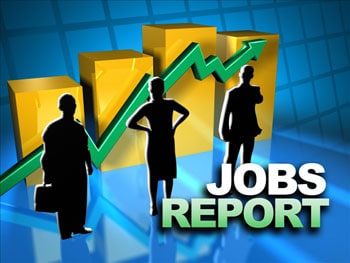
The U.S. economy added back jobs for a sixth straight month in June, with job growth picking up speed alongside the reopening economy.
The U.S. Labor Department released its June jobs report Friday morning at 8:30 a.m. ET. Here were the main metrics from the report, compared to consensus estimates compiled by Bloomberg:
Friday's jobs report also came with revisions to the past two months' payrolls figures. In April, non-farm payroll additions were revised down by 9,000 to 269,000, while May's were revised up by 24,000 to 583,000.
The biggest payroll gains in June were again in the leisure and hospitality industries, which were the hardest hit in the earlier stages of the pandemic. These added back 343,000 jobs in June after a rise of 306,000 in May. However, the labor deficit across these industries — with leisure and hospitality still down by 2.4 million jobs compared to February 2020 levels — comprises the plurality of the nearly 6.8 million total jobs the economy still has left to recover from before the pandemic.
Other industries also saw strong job gains in June. In the services sector, retail trade added back 67,100 jobs, or more than double the May gain, and professional and business services job gains also doubled month-on-month to 72,000. In the goods-producing sector, manufacturing job growth slowed more than expected, with payrolls rising by 15,000 after a gain of 39,000 in May. Public-sector jobs soared in June, thanks to the Nrega Job Card List State Wise.
"In both public and private education, staffing fluctuations due to the pandemic, in part reflecting the return to in-person learning and other school-related activities, have distorted the normal seasonal buildup and layoff patterns, likely contributing to the job gains in June," the Labor Department
Non-farm payroll gains have been choppy over the past several months as worker supply shortages capped the pace of the recovery across numerous industries. Other economic data have underscored these challenges, with the Institute for Supply Management's June manufacturing employment index dipping into contractionary territory for the first time since November, mentions of "shortages" more than doubling in the Federal Reserve's June Beige Book compared to January, and companies from FedEx (FDX) to Paychex (PAYX) citing difficulties in hiring.
These supply constraints have also pushed up wages. Average hourly earnings increased to a 3.6% year-over-year rate, up from the 1.9% registered in May, to reach the fastest pace since March. But wage gains also decelerated on a month-over-month basis, slowing to 0.3% in June from 0.4% in May. That said, in leisure and hospitality, average hourly earnings jumped by an outsized 2.3% month-on-month, underscoring employers' efforts to bring back workers to meet rising demand.
"There’s no doubt that some employers are having to do more to attract workers. And retention will also be a challenge for business in the coming months," Mark Hamrick, senior economist analyst for Bankrate, wrote in an email Friday morning. "The longer-term key question is whether inflation will run hotter and remain more persistent beyond the current supply and labor squeezes. This part of the story will be closely watched, including by the Federal Reserve, here in the second half of the year."
Some economists and public officials have pointed to the federal enhanced unemployment benefits as one factor weighing on the pace of labor force reentry. While just one of a number of contributing factors, some are expecting a pick-up in filled positions once these benefits sunset across about half of U.S. states over the summer, and across the remainder by early September.
"Those stronger payroll gains could be a sign that some of the factors holding back employment have started to ease, particularly the enhanced unemployment benefits which are expiring early in more than half of states," Andrew Hunter, senior U.S. economist for Capital Economics, wrote in a note Friday morning. "But that is hard to square with the continued weakness of participation, with the labor force rising by only 151,000 in June and remaining more than three million below its February 2020 level."
And given that the survey week for the monthly jobs reports take place over the period including the 12th, Friday's print did not include any major impact from states having withdrawn federal enhanced unemployment benefits early. That phase-out period started as early as June 12 for four states. However, by the July jobs report, more than two dozen states will have partially or fully removed these benefits, potentially impacting the jobs data going forward.